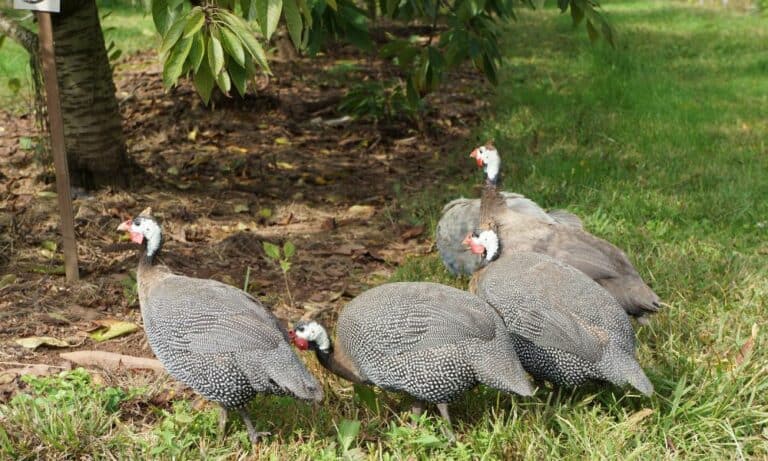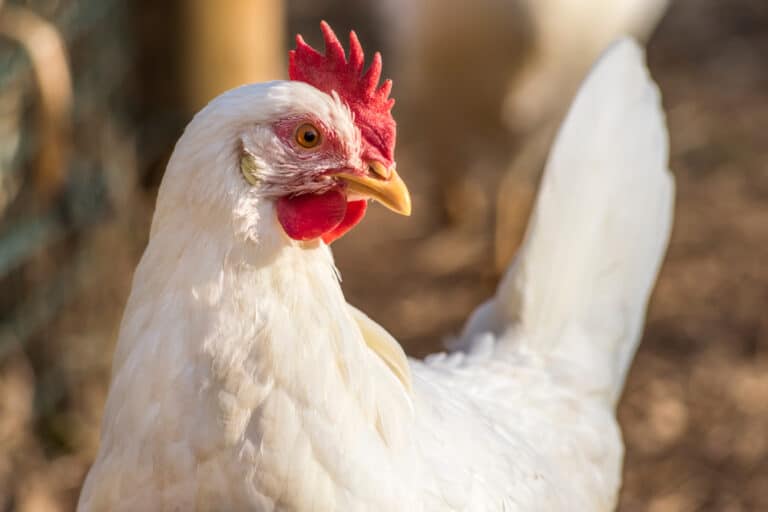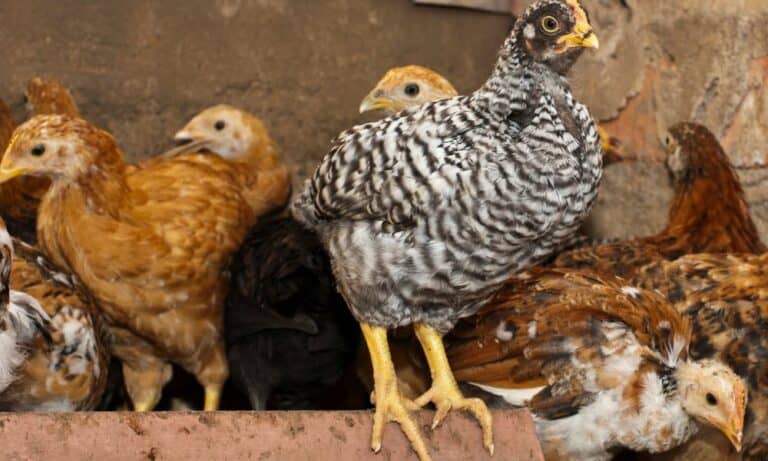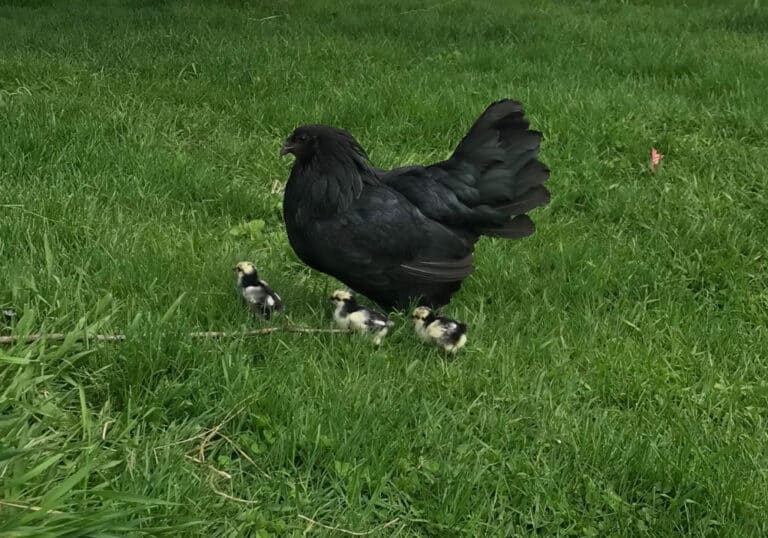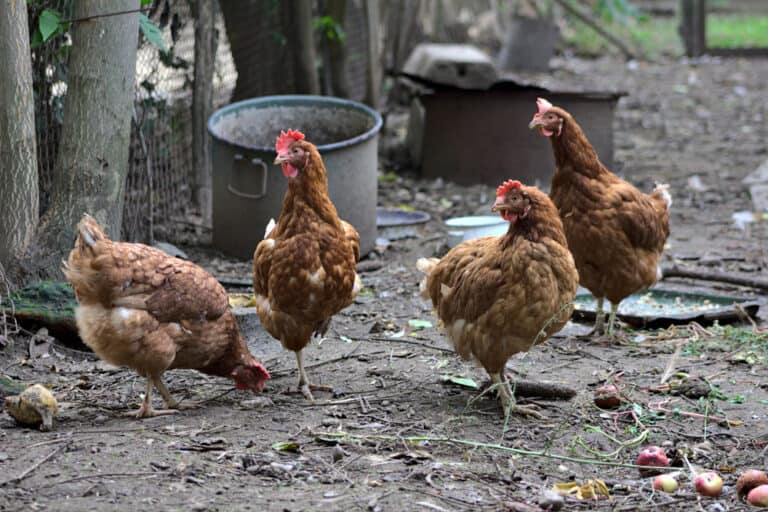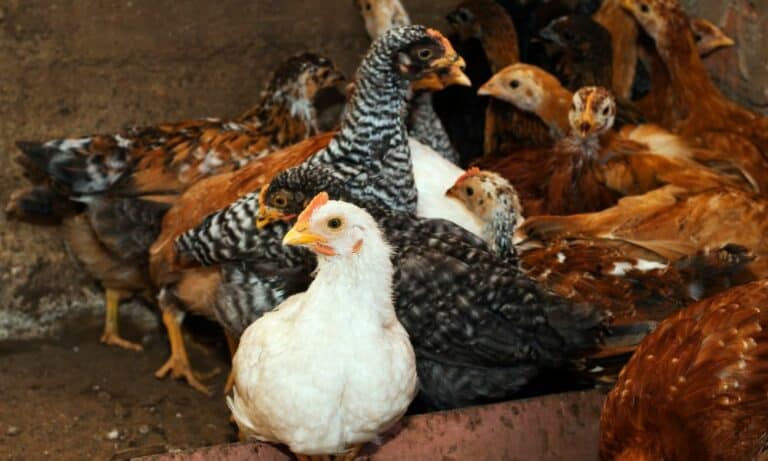If you want to breed chooks, you need a rooster! And even if you don’t, some keepers swear by them to help keep order in the yard. But what are the best breeds to choose?
We’re going to look at the best rooster breeds for your flock. We’ll learn about their origins, characteristics and temperament. And we’ll share some useful information on deciding whether you should add a rooster to your flock in the first place.
Read on to find out more!
Should I add a rooster to my flock?
First things first: you don’t need a rooster for your hens to lay eggs. They’ll lay them anyway, but the eggs won’t be fertilized. So you’ll still have plenty of eggs for your breakfast table.
But if you want to breed from your chooks, a rooster is a must. And adding one to your flock can have other advantages too.
In flocks without a rooster, the most dominant hen will normally take charge. That can lead to bullying and farmyard squabbles. But with a rooster around, the hens will generally be more settled and peaceable.
Roosters are also great at alerting the flock to predators. They’re good at helping the hens forage. And they make excellent alarm clocks!
But they do come with some drawbacks too.
Boys will be boys, and roosters will get amorous with hens. That’s pretty much essential, of course, if you’re hoping for chicks! But for hens who aren’t used to having a rooster around, this may be rather stressful. And roosters can even injure hens’ feathers during mating.
Getting the right number of roosters to hens will help reduce injury to any one bird. One rooster to 10 or 12 hens is usually a good ratio.
If you want to chicks that are true to breed, you’ll need a rooster of the same breed as your hens. But even if that doesn’t matter to you, it’s important to consider the chickens’ relative sizes.
Roosters of a much bigger breed than the hens could do them serious injury. And those that are much smaller will find mating difficult, if not impossible.
Roosters can be aggressive too. It’s not a good idea to have more than one rooster in a flock, unless they’re an exceptionally docile breed. And male chicks will need to be rehomed before they mature to the point of fighting with each other.
Last but not least, be aware that some areas prohibit the keeping of roosters because of their loud crowing. So make sure you know about any rules that apply where you live.
Best Rooster Breeds for Your Flock
So you’ve decided you want to add a rooster to your flock – congratulations! Your next decision is which breed to pick. Here are some great options to consider.
1. Faverolles
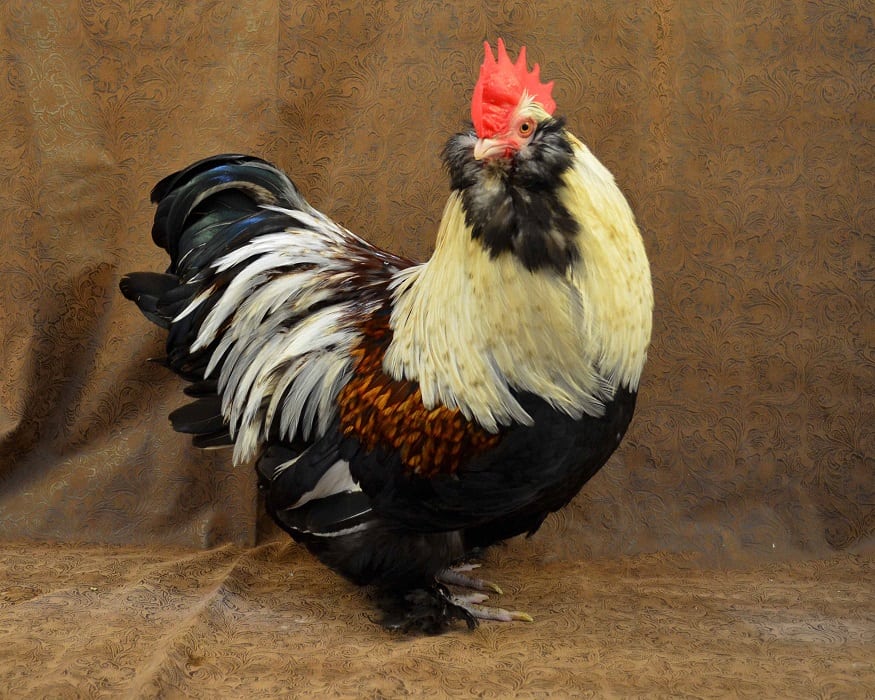
If you’re looking for a quieter rooster, the lovely Faverolles is a great choice. The males are some of the quietest of any breed.
They’re also friendly and curious birds, calm and stately. And they’re excellent foragers, who’ll find all manner of tasty treats for their girlfriends.
They have dramatic plumage that marks them out very clearly from your hens. Breast, undercarriage, beard, and leg feathers are all black, while hackles, back, and saddle are the color of straw. The wings are a rich gold shade with white tips. And tail feathers are a striking beetle green.
Standard roosters weigh around 30 pounds. There’s also a bantam variety, and bantam males weigh about 30 ounces.
The breed hails from France, and takes its name from a French village. A single chicken is still a Faverolles (not a Faverolle), though being French, the “s” is silent.
2. Orpington
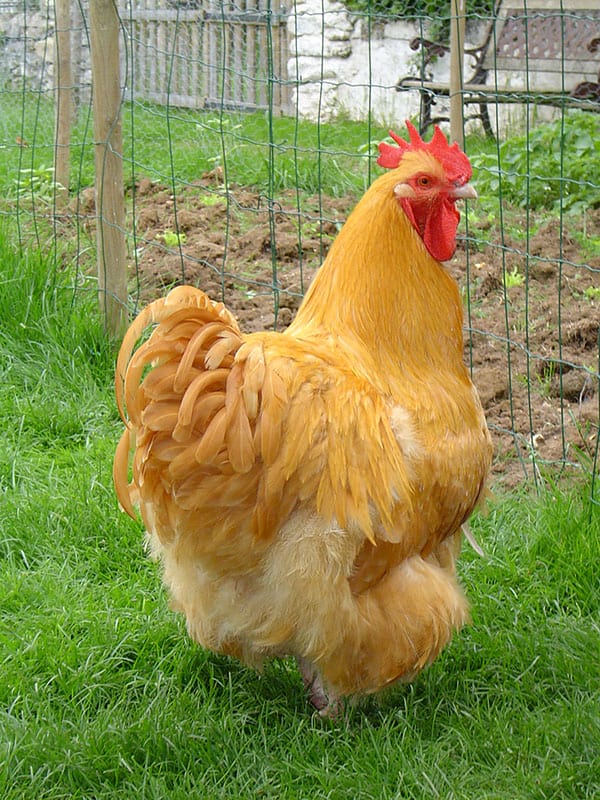
The Orpington is a British breed, named after the town in Kent where it was developed. It was exported to the US in the nineteenth century. And its popularity exploded after it was exhibited in Madison Square Gardens in 1895.
Today, Orpingtons are one of the best loved breeds out there. Not only are they beautiful, but the hens are also friendly and cheerful, and lay plenty of eggs.
And that same genial disposition extends to Orpington roosters. Standard roosters weigh in at between 8 and 10 pounds, so they’re fairly large birds. But they’re notably calm, and rarely become aggressive with either people or other chickens.
You can also find bantam Orpingtons. Bantam roosters weigh around 3.5 pounds, while the hens are around half a pound lighter.
As with all breeds, roosters that have been handled regularly from a young age will be the most comfortable with humans. But even the friendliest rooster may become feistier during the mating season.
3. Cochin
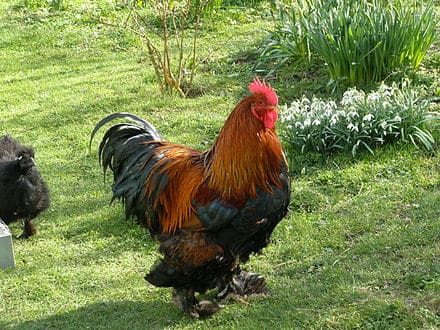
Cochins hail from China, and they’re most usually kept as show birds. In fact, their striking good looks played a big part in the growing popularity of poultry fancying as a hobby in the nineteenth century.
Both hens and cocks are relatively large birds. Adult males can weigh anything from 8 to a mighty 13 pounds. For females, the weight range is between 7 and 11 pounds. There’s also a bantam variety, with roosters weighing about 2 pounds, and hens about a quarter of a pound lighter.
It’s often the case in the poultry world that the larger the rooster, the calmer and less aggressive they are. Perhaps they don’t feel they have a point to prove! And that’s certainly the case with standard Cochin roosters, who are well known for their docile disposition.
Bantam Cochins, on the other hand, are often a bit feistier.
One thing to note with Cochins is that both male and female chooks have heavy feathering on their legs and feet. That means they need particular care in rainy, muddy or cold conditions. If the feathers become wet or dirty, they’ll leave the bird vulnerable to infection and frostbite.
4. Langshan
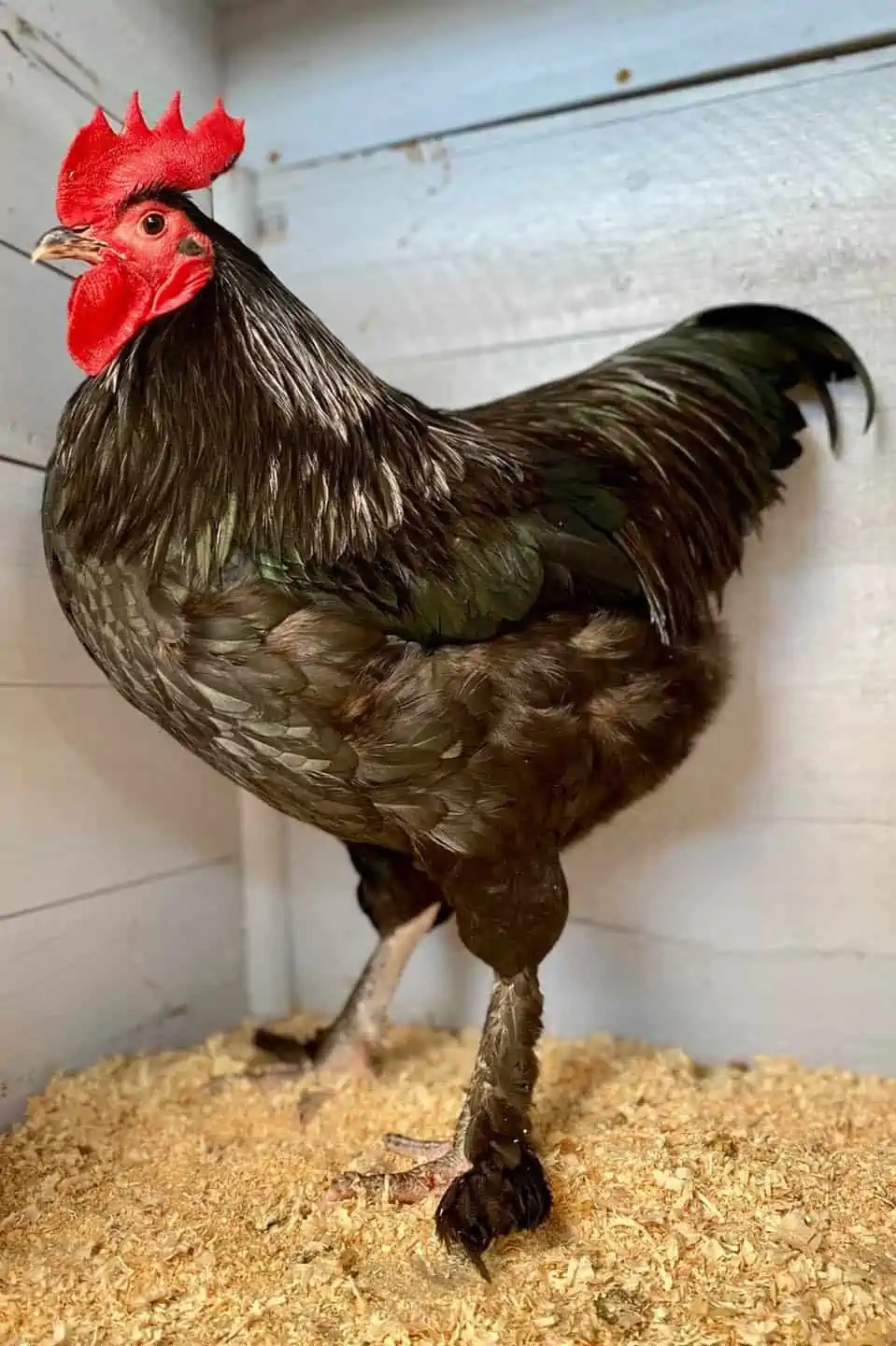
Langshans are another large breed that’s often raised for exhibition. Langshan hens are also good layers, producing fairly big, brown eggs.
The roosters are tall boys, standing between 2 and 3 feet high. They’re not particularly heavy, though, weighing in at around 9 pounds.
This is another case where stature goes alongside a calm disposition. Langshan roosters are generally calm and non-aggressive birds.
There are three different color varieties of Langshan: black, white and blue. All have white skin, dark brown eyes and a single comb. They’re hardy and good foragers, and don’t need as much room to roam as some other breeds.
One thing to note is that they’re good at flying, and can soar over even high fences.
5. Australorp
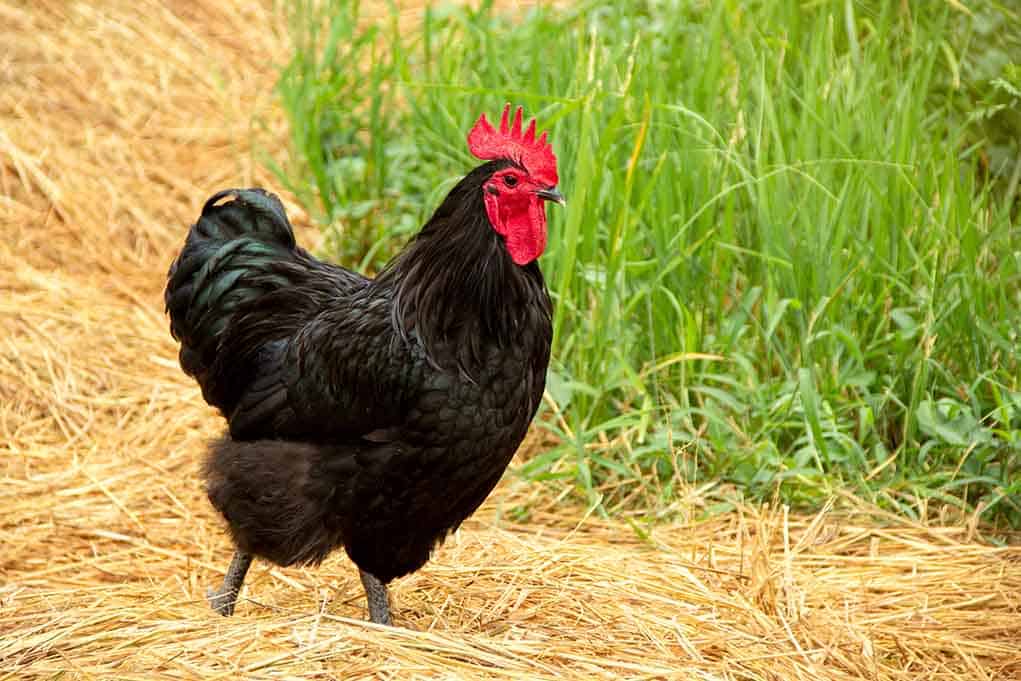
The Australorp originated in Australia in the middle of the twentieth century. The hens are well known as amongst the best layers of any breed. One record-breaking chook laid 364 eggs in 365 days!
And the roosters are docile boys, rarely showing signs of aggression. They can be rather shy with humans, but will warm up in response to a ready supply of treats!
They have beautiful black plumage, which shines beetle-green in the sunlight. And they’re fairly large birds, weighing up to 10 pounds.
They’re generally a hardy breed, able to cope with the changeable Australian climate. But the roosters do have relatively big combs and wattles.
That means they’re vulnerable to frostbite in cold temperatures. Smear them with coconut oil or petroleum jelly to protect them when the mercury drops.
6. Welsummer
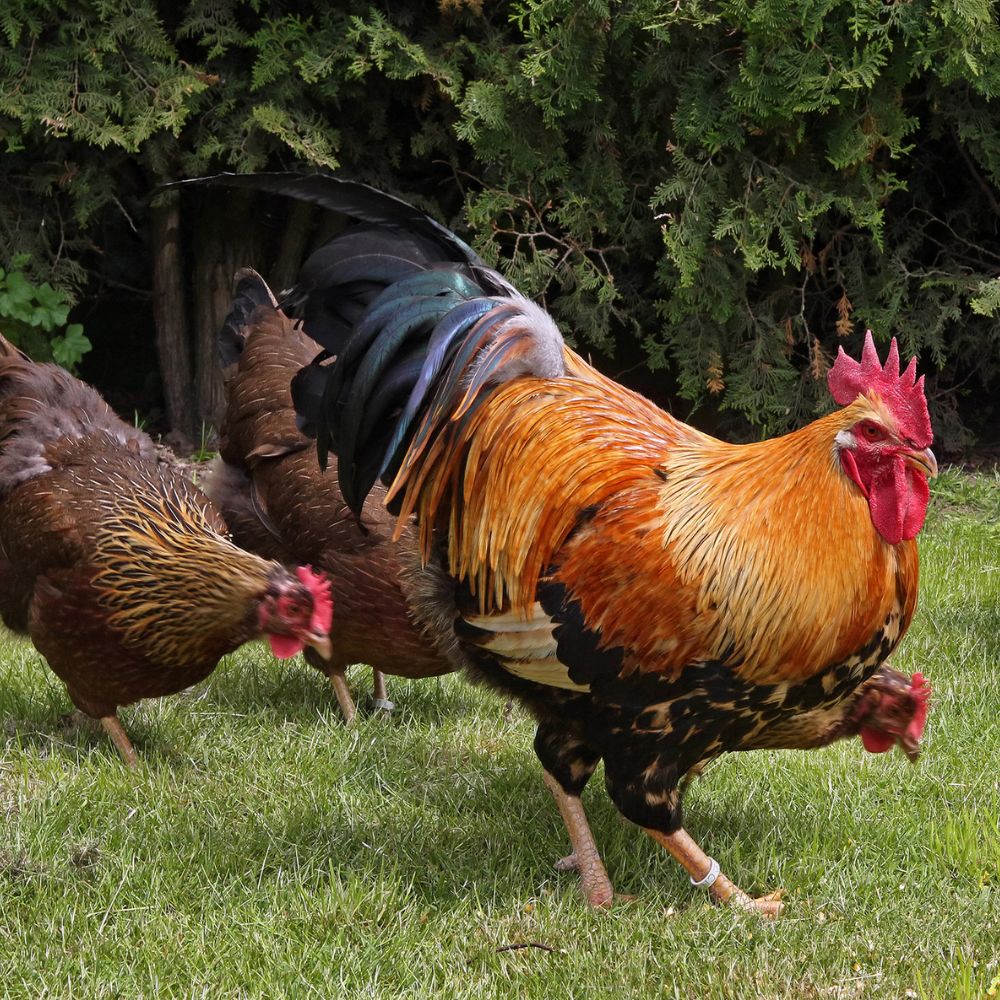
Welsummers originate in the Netherlands, and take their name from the small village of Welsum, in the east of the country.
There are differing views on the temperament of Welsummer roosters. Many keepers praise their calm nature, telling stories of roosters who’ll happily take food from their hands. But we’ve also heard tales of aggressive boys attacking humans who dare to approach the flock.
The reality is that both accounts are probably true. While breed plays a part in temperament, so does upbringing. And some birds will defy all expectations with their unusual personalities.
That said, Welsummer roosters are generally calm and friendly chaps. And they’re attractive birds, with plumage that’s quite different from that of the hens. They have a golden-brown head, neck and saddle, and their wing fronts and bows are a bright red-brown.
They’re smaller than many of the other roosters on this list too. Standard Welsummer roosters weigh between about 6 and 7 pounds. And there’s also a bantam variety, with males weighing about 46 ounces.
Both roosters and hens are great foragers. And the hens are decent layers too, raising chicks that are usually strong and healthy.
7. Silkie
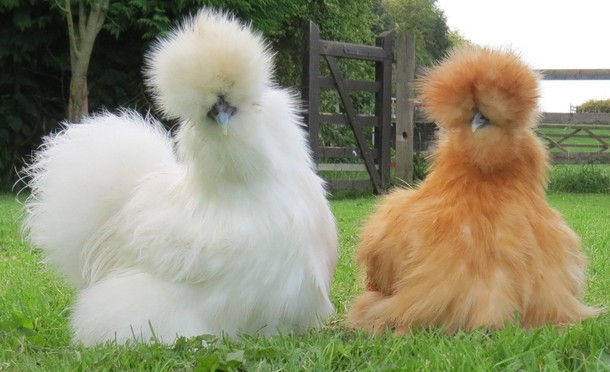
Silkies are believed to originate from China, or possibly elsewhere in Asia. They’re so named because of the soft texture of their feathers, which is more akin to down than outer feathers. And because of their unusual feathers, Silkies can’t fly.
They’re small birds, with adult males weighing between 2 and 3 pounds. But they don’t suffer from a Napoleon complex! Indeed, both roosters and hens are renowned for their sweet nature. We’ve even heard of cases of two Silkie roosters co-existing peacefully.
But if they’re living with more assertive breeds of hen, they may not always be in charge. In flocks with dominant Barred Rock hens, for example, the roosters may find themselves intimidated by the ladies!
Aside from their fluffy feathers, Silkies have several other unusual characteristics. They have large crests, bright blue earlobes, and five toes on each foot – one more than most breeds. And their skin and bones are both black.
The hens are good layers. And if you’re hoping for chicks, they’re a good choice. They regularly go broody, are patient sitters, and make great moms.
8. Plymouth Rock
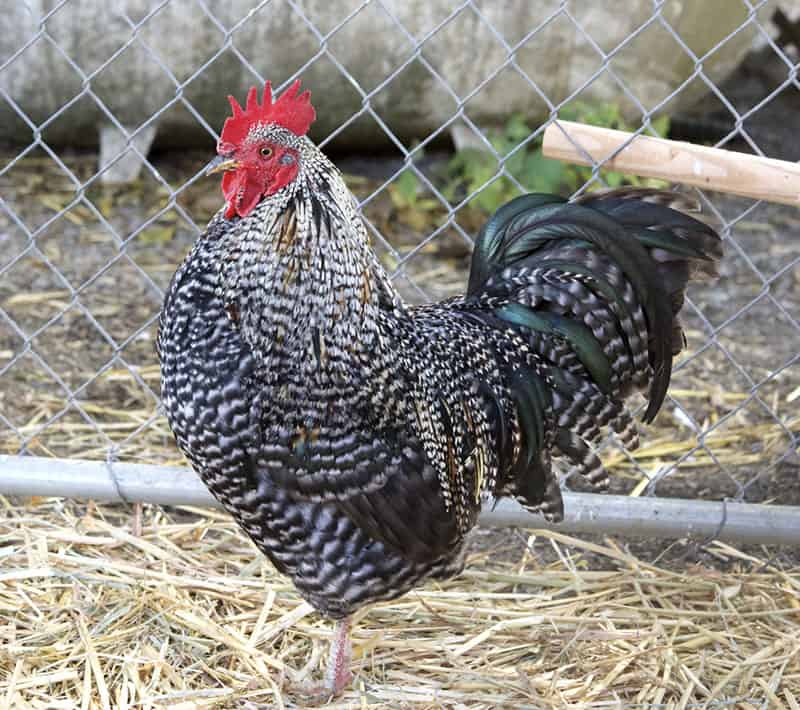
Plymouth Rocks were first bred in Massachusetts in the nineteenth century. The first chickens had a barred plumage pattern, but later other color varieties were developed. Today, Barred Rocks, as they’re known, remain particularly popular.
The roosters weigh around 7.5 pounds. There’s also a bantam variety, with male bantams weighing about 3 pounds.
They can be pretty fierce when it comes to protecting their flocks. We’ve heard of one case where a Barred Rock rooster successfully fought off a raccoon!
They’re not usually aggressive with humans, though – but there are exceptions. If this is the breed you choose for your rooster, look for a bird that’s been handled regularly from a chick. That doesn’t guarantee he won’t be aggressive, but it certainly reduces the chances.
9. Polish
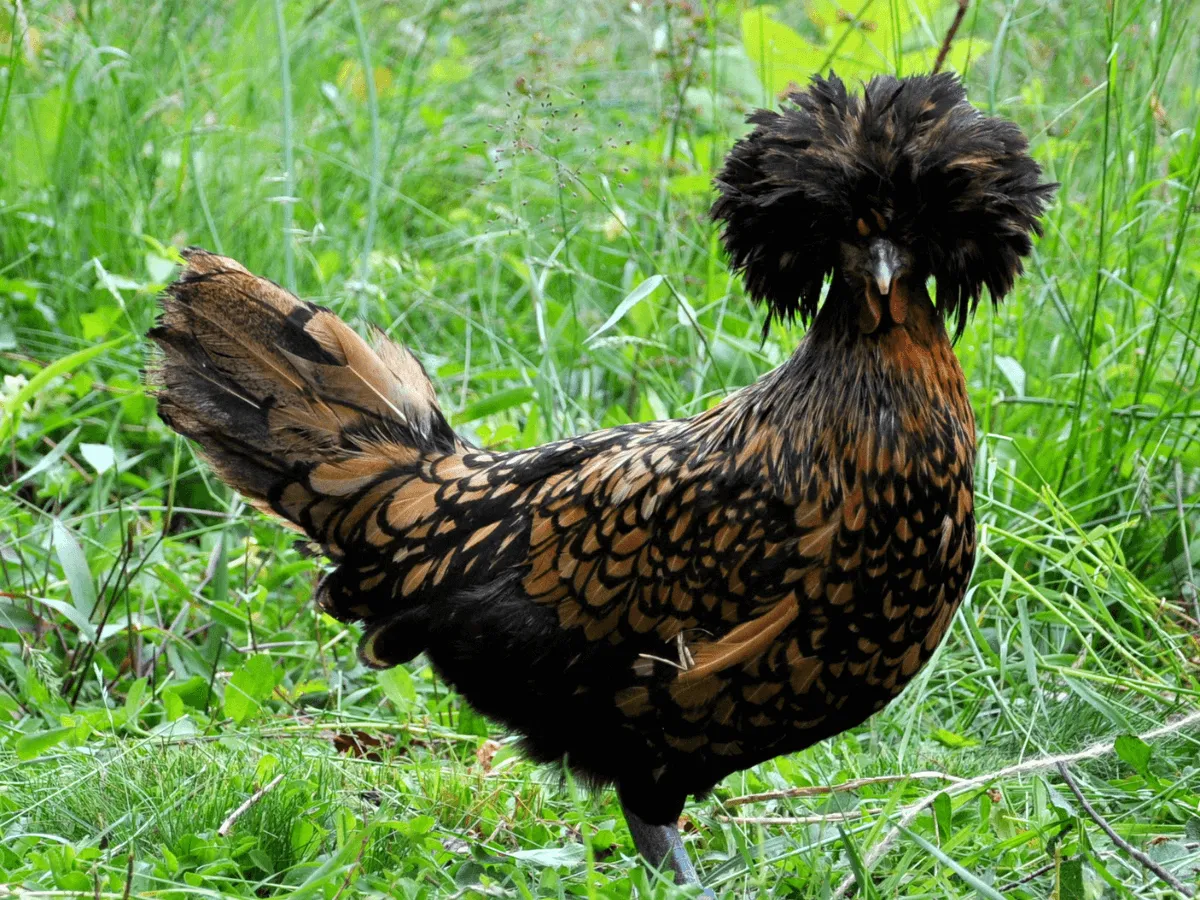
Polish chickens are known for their large crest of feathers. They’re mainly raised for exhibition, but Polish hens are good layers too.
That striking large crest does, however, cause some issues for both sexes. Its size impairs the birds’ field of vision, meaning they can be easily startled. And it also restricts the roosters’ ability to watch out for predators.
Many keepers of Polish chickens deal with these problems by taping up the crests between shows. It’s a good option, as long as it’s done with care and the feathers aren’t pulled.
Some people suggest cropping the crests instead, but don’t try doing this unless you’re absolutely sure you know what you’re doing. Cropping the feathers too short can cause injury, pain, and infection.
Polish roosters weigh in at around 6 pounds – so in rooster terms, they’re not particularly big. But they’re usually calm birds, who won’t be aggressive to either the hens or their keepers. That’s particularly likely with roosters who’ve been raised by hand and are used to people.
Despite their name, you may be surprised to hear that the origins of the Polish chicken are the subject of some controversy.
While some believe they come from Poland, others believe the breed first developed in the Netherlands. “Pol” is Dutch for “head”, and might reflect this chicken’s distinctive head shape and large crest.
Ready For Your Early Morning Call?
That brings us to the end of our look at the best rooster breeds for your flock. We hope the information here has brought you one step closer to your decision.
Different keepers have very different approaches to the idea of including roosters in their flocks. For some, a rooster is an essential part of a happy and settled flock. For others, they’re more trouble than they’re worth.
And remember: while different breeds have different reputations when it comes to the temperament of their roosters, all birds are individuals. A hand-reared rooster from a placid breed is the most likely to be non-aggressive, but there are no guarantees!


